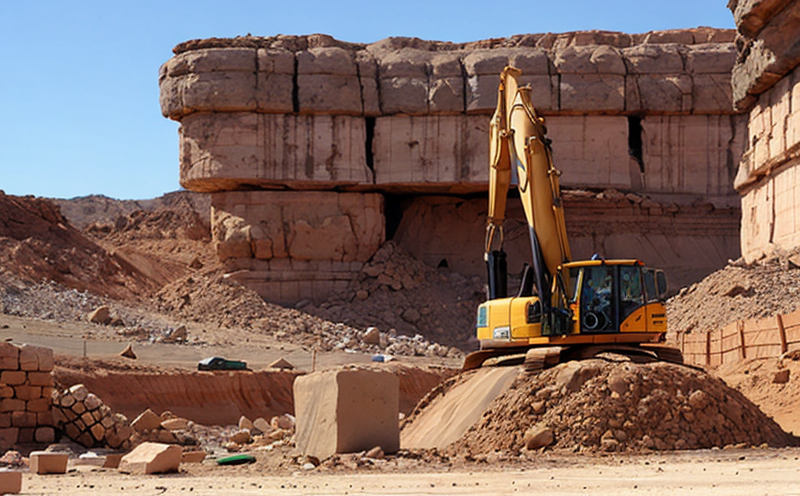ISRM Suggested Method for P Wave Velocity in Rock Specimens
The ISRM (International Society for Rock Mechanics) suggested method for measuring the P wave velocity in rock specimens is a fundamental test procedure used to assess the mechanical properties of rocks. This method provides a robust framework for determining the elastic modulus and strength parameters, which are critical in understanding the behavior of rocks under various loading conditions.
The P wave velocity test is particularly important in mining testing as it helps in evaluating the integrity and stability of rock formations that are subjected to significant stress during excavation and processing. This information is essential for ensuring safety and optimizing operational efficiency in mining activities. The method follows a standardized procedure outlined by ISRM, which ensures consistency and reliability across different laboratories.
The test involves several key steps: specimen preparation, instrumentation setup, data acquisition, and analysis. Specimens are typically cylindrical or prismatic rock cores cut from the field samples. These specimens must be free from defects and adhering to specific dimensions as per ISO 14687-2. The apparatus used includes specialized equipment for generating P waves such as impact hammers and transducers.
Once the specimen is prepared, it is placed in a testing machine capable of applying controlled stress along with recording displacement. The transducer sends out P waves into the sample, which propagate through it at a velocity dependent on its elastic properties. By measuring the time taken for these waves to travel between two points, the velocity can be calculated using the formula:
Where \( V_P \) is the P wave velocity, \( d \) is the distance traveled by the wave in meters, and \( t \) is the time taken for the wave to travel that distance. This calculation provides insights into the rock's elastic properties.
The results obtained from this test are crucial not only for mining operations but also for civil engineering projects involving large-scale excavation works. Understanding these parameters allows engineers to predict potential failure modes and implement appropriate safety measures.
Moreover, the ISRM method ensures that tests conducted in different laboratories yield comparable results. This standardization is vital given the global nature of many mining projects where collaboration between various stakeholders is common.
Scope and Methodology
| Stage | Description |
|---|---|
| Specimen Preparation | Cylindrical or prismatic rock cores are cut to precise dimensions. Specimens must be free from defects. |
| Instrumentation Setup | Testing machine capable of applying controlled stress and recording displacement is used. Transducers generate P waves. |
| Data Acquisition | The time taken for the P wave to travel between two points is measured accurately. |
| Analysis | Velocity is calculated using the formula \( V_P = \frac{d}{t} \). |
This methodology ensures that all aspects of the test are conducted under controlled conditions, thereby enhancing the accuracy and reliability of the results. Compliance with ISRM guidelines guarantees consistency in testing procedures across different environments.
Quality and Reliability Assurance
The quality and reliability assurance process for P wave velocity tests involve several key practices:
- Calibration of Equipment: All testing machines and instruments are regularly calibrated to ensure precision.
- Data Validation: Multiple measurements are taken and averaged to minimize errors due to random fluctuations.
- Auditing: Regular audits conducted by independent bodies verify adherence to ISRM standards.
- Training: Continuous training programs for personnel involved in testing ensure they stay updated with the latest techniques and best practices.
These measures collectively contribute to maintaining high standards of accuracy and reliability, which are paramount in mining operations where decisions based on test results can have significant impacts.
Competitive Advantage and Market Impact
The ability to accurately measure P wave velocity using the ISRM method provides several competitive advantages:
- Data Precision: Accurate data leads to better decision-making, enhancing operational efficiency.
- Risk Management: Understanding rock properties helps in identifying potential risks and implementing preventive measures.
- Innovation: Reliable test results facilitate the development of new materials and techniques for mining applications.
In terms of market impact, this service plays a crucial role in ensuring compliance with international standards, thereby gaining credibility among clients. It also supports sustainable practices by enabling informed decisions that minimize environmental impacts during extraction processes.





